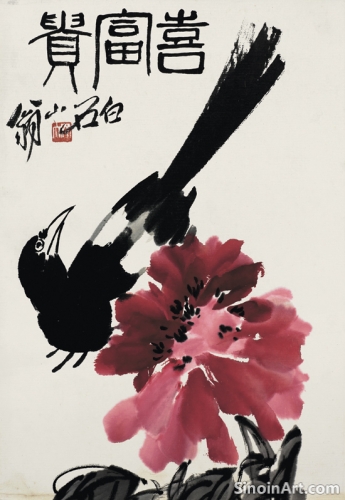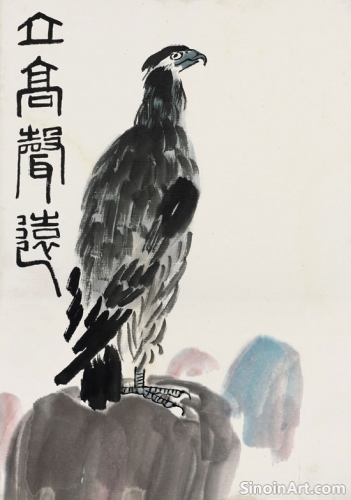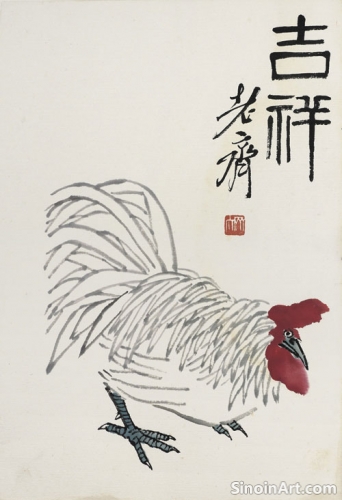The Spiritual and Philosophical Dimensions of Xieyi
|
Xieyi painting is more than just a visual art form; it's deeply rooted in Chinese philosophy and spirituality. The practice of painting becomes a form of meditation, a way for the artist to connect with the inner self and to express their understanding of the universe. It’s a powerful connection between the artist and the world.  Daoism, with its emphasis on naturalism, spontaneity, and the pursuit of harmony with the Dao (the Way), is a major influence on Xieyi painting. The artist aims to express the intrinsic nature of things, not through meticulous representation, but through suggestion and capturing the vital essence, or qi. The artist seeks to follow the natural flow of ink and brush and become part of the greater world.  Chan (Zen) Buddhism, with its emphasis on intuition, mindfulness, and the direct experience of reality, also plays a significant role in shaping the aesthetic of Xieyi. The focus is on capturing the essence of a subject in the moment, without intellectual analysis or deliberation. Spontaneity and immediacy are key to expressing the true nature of things. This concept of direct experience guides the process.  The concept of qi or vital energy is central to Xieyi painting. It is not merely about capturing the outward appearance of a subject but about conveying its inner energy and vitality. The artist seeks to imbue the artwork with their own inner qi, as well as resonating with the qi of the subject they are representing. This infusion of energy is a vital component of Xieyi. The use of negative space is not just about aesthetics; it also reflects the philosophical concept of emptiness (sunyata) in Buddhism. The blank areas are seen as essential for balance, inviting the viewer to complete the image and to engage actively with the artwork. This interplay between ink and space is essential to the painting’s meaning. It is a reflection of the interconnectedness of things. |
Tag : Daoism and painting, Chan Buddhism art, Qi energy, spiritual art, emptiness in art
Related information
- The Significance of Brushwork in Xieyi Painting
- Early Development of Xieyi: Song and Yuan Dynasties
- Xieyi Painting and the "Spirit of the Brush"
- Xieyi vs. Gongbi: Two Paths of Chinese Painting
- Xieyi Painting and the Concept of "Yi Qian Bi Hou"
Brushwork is at the heart of Xieyi painting, serving as the primary means of artistic expression. The brush is not merely a tool; it is an extension of the artist’s hand and emotions. Mastery of the brush is essential to conveying the spirit and essence of a subject.
The roots of Xieyi painting can be traced back to the Song Dynasty (960-1279), when scholar-officials began to develop a distinctive style of painting that reflected their unique values and aesthetics. The emphasis shifted from courtly patronage to individual expression, setting the stage for the emergence of Xieyi.
"Spirit of the Brush" (bǐyì) is central to Xieyi, emphasizing the unique expressive quality and energy that emanates from the brushstrokes, reflecting the artist's inner state, personal vision, and technical mastery, with each brushstroke imbued with intention, life, and a sense of spontaneity.
This article contrasts Xieyi painting with Gongbi painting, highlighting the differences in their techniques, brushwork, use of color, and overall artistic philosophies within the Chinese painting traditions.
"Yi Qian Bi Hou" (intention before the brush) is central to Xieyi, emphasizing the importance of having a clear vision and intention before painting, so that brushstrokes naturally express the artist's inner feelings and ideas, requiring thoughtful preparation, and guiding brushwork with creativity and personal vision.